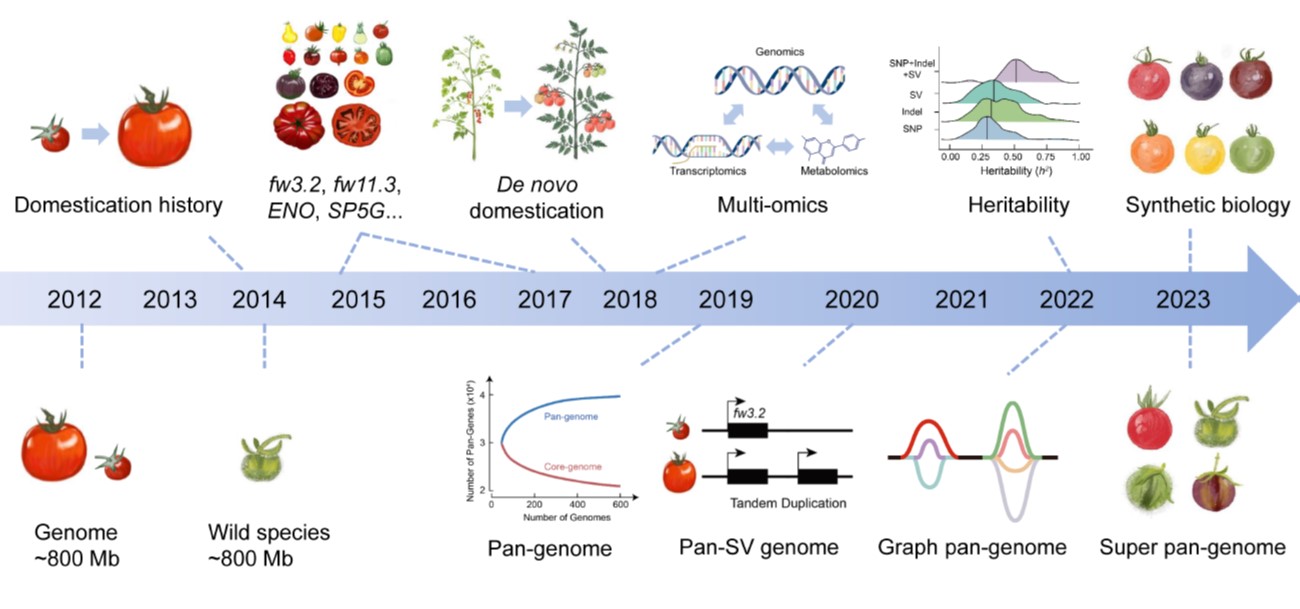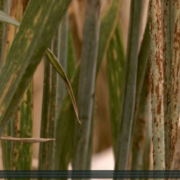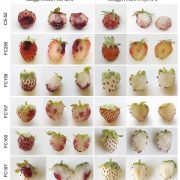Review: The genomic route to tomato breeding: Past, present, and future
 Widely and abundantly eaten tomatoes (Solanum lycopersicum) are delicious and nutritious, but the genetic diversity of cultivated tomatoes is quite narrow. In this review, Wang et al. give an overview of efforts to increase diversity, through introduction of genes from wild relatives and other approaches. Since the first tomato sequence was completed in 2012, countless sequences have been obtained from various cultivars and wild relatives, capturing the inter- and intra-species diversity. As a commercially important crop, tomatoes have been extensively analyzed for metabolic, developmental, resilience, and consumer preference traits, which have been mapped to genes and loci; there’s no shortage of data about tomatoes. Key traits that have been mapped pertain to flowering time, disease resistance, fruit weight, shape, ripening and quality. All this information provides the opportunity to produce exceptional varieties, but this is hindered by slow pace of conventional breeding. New technologies to accelerate breeding include haploid and male sterility breeding, heterosis, de novo domestication, gene editing, synthetic biology, and AI-assisted approaches. (Summary by Mary Williams @PlantTeaching) Plant Physiol. 10.1093/plphys/kiae248
Widely and abundantly eaten tomatoes (Solanum lycopersicum) are delicious and nutritious, but the genetic diversity of cultivated tomatoes is quite narrow. In this review, Wang et al. give an overview of efforts to increase diversity, through introduction of genes from wild relatives and other approaches. Since the first tomato sequence was completed in 2012, countless sequences have been obtained from various cultivars and wild relatives, capturing the inter- and intra-species diversity. As a commercially important crop, tomatoes have been extensively analyzed for metabolic, developmental, resilience, and consumer preference traits, which have been mapped to genes and loci; there’s no shortage of data about tomatoes. Key traits that have been mapped pertain to flowering time, disease resistance, fruit weight, shape, ripening and quality. All this information provides the opportunity to produce exceptional varieties, but this is hindered by slow pace of conventional breeding. New technologies to accelerate breeding include haploid and male sterility breeding, heterosis, de novo domestication, gene editing, synthetic biology, and AI-assisted approaches. (Summary by Mary Williams @PlantTeaching) Plant Physiol. 10.1093/plphys/kiae248









